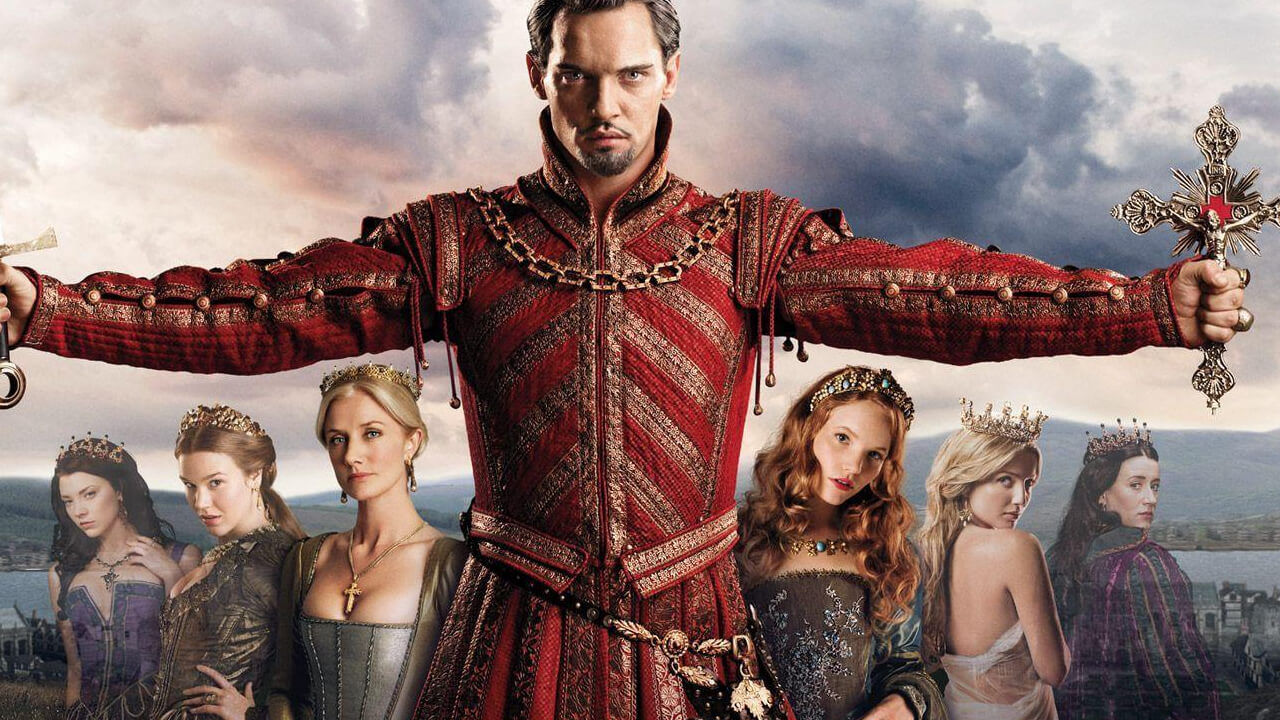

The Six Wives
The role of Catherine of Aragon:
When Henry tried to divorce Catherine, Catherine had refused to acknowledge the authority of the court. Having been summoned to attend on the opening day, she made a great play of appealing to Henry directly and then walking out.
What is an annulment?
When a marriage is cancelled as if it had never happened.
What’s a divorce?
When a marriage is ended.
Catherine also made the annulment very difficult to achieve:
• Catherine still had feelings for Henry, but had too much pride and character to let herself be pushed aside.
• She was concerned that if her marriage was annulled, their daughter would be made illegitimate and removed from the succession.
What is to be ‘illegitimate’?
To be born when your parents are not married; or in those days, to be declared ‘illegitimate’ meant that you no longer had the rights of a child born to married parents.
• Catherine maintained her marriage to Arthur had never been consummated, so Biblical rulings didn’t apply. This was the main point, and clearly impossible to prove one way or the other.
What does ‘consummation’ of a marriage mean?
To have tried to make a baby.
• Catherine was popular in the country. Even when many of her supporters were kept away, two bishops were prepared to speak up for her when Parliament debated the issue of the divorce in 1531.
Why were Henry’s marriages important?
Henry’s marriages were extensive (many), tumultuous (full of arguments), and controversial (should he have divorced so many times?), and they were directly related to policy changes during his reign.
King Henry VIII’s first marriage to Catherine of Aragon happened when he was just 17 years old. Shortly after the marriage, Catherine had a stillborn (born dead) girl; however, a few months later baby Henry, named after the King, was born.
The healthy state of the newborn was met with celebrations, but only seven weeks after the birth, the baby died.
Catherine had another miscarriage and another infant death, but then in 1516, Princess Mary was born to the royal family.
Henry and Catherine were married for the longest time of all the wives.
Now, in more detail, information about each wife.
1. Catherine of Aragon
Catherine is best known today for her role in sparking the Reformation; the annulment of her marriage led to Henry being excommunicated from the Catholic Church. But in life she was much more than that.
At the time of their marriage, Henry was 18 and very much in love with the 23 year old Catherine.
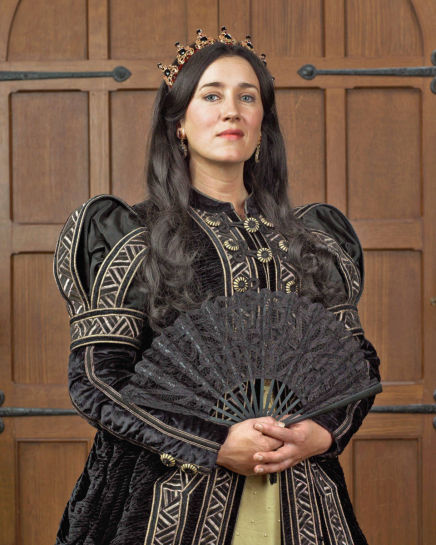
What was the ‘reformation’?
It was the time when Henry VIII divided the Church of Rome (Roman Catholics), lead by The Pope, and Henry created the Church of England. BOTH are Christian groups.
What is to be ‘excommunicated’?
It means to be expelled (thrown out) of the Church. In those days, being excommunicated meant that you were no longer blessed by God and therefore would go to Hell.
As the daughter of Spanish monarchs Isabella I of Castile and Ferdinand II of Aragon, Catherine was a political catch - which means a good girl to marry - a joining of powerful families.
Betrothed at the age of three to Arthur, Henry’s older brother and the heir apparent to the English throne, her position became uncertain when, in 1502, her husband died just five months into their marriage.
What is to be ‘betrothed’?
It means promised to be married to someone.
Half of Catherine’s dowry had already been paid to Arthur’s father, Henry VII, so the English king faced the dilemma of how to pay it back.
What’s a dowry?
It is money paid to the parents of one of the marriage partners - usually paid to the father of the bride, but in Royal things, paid by the father of the bride to the father of the Groom.
Catherine was held almost like a prisoner with little money, while the problem was being debated. But in 1507, six years after Arthur’s death, she became the ambassador of the Aragonese Crown to England. Two years later, Catherine married Henry VIII – who was five years younger than she was – shortly after he had ascended the throne.
This marriage between a man and his brother’s widow required, and was granted, dispensation by the Catholic Church (The Pope).
‘Dispensation’ means special permission.
The couple’s nearly 25-year-long marriage was certainly eventful for Catherine.
In 1513, she served as regent (a person in place of an absent or too young monarch) for six months while Henry was away battling in France.
During this time she oversaw the English victory against Scotland at the Battle of Flodden (when King James IV of Scotland was killed), but she also gave birth to a stillborn child.
Catherine suffered multiple miscarriages and stillbirths. She bore the king’s first child, a boy, only to see him die 52 days later. Her only child to survive to adulthood was a daughter born in 1516, Mary; who went on to become queen.
One year after Catherine suffered another miscarriage in 1518, Henry had a son by another lady - Elizabeth Blount. The boy was named Henry Fitzroy, and is Henry’s only confirmed illegitimate child.
Blount was not Henry’s only mistress during his marriage to Catherine.
But it was Henry’s infatuation with Anne Boleyn, one of Catherine’s ladies-in-waiting, from 1526, which set into motion a chain of events that would not only see the end of Catherine and Henry’s marriage, but also lead to England’s Protestantisation.
What does ‘to be infatuated with’ mean?
It means to be so interested in someone that you sort of forget about other things.
Henry tried to have his marriage to Catherine annulled (cancelled) to marry Anne. He argued that their marriage had been invalid because of Catherine’s marriage to his brother. Devout Catherine rejected this, saying that she and Arthur’s relationship had never been consummated.
But The Pope refused to cancel the marriage, and basically that caused the Reformation - the split from the Church of Rome, and the creation of the Church of England.
Henry’s marriage to Catherine was eventually annulled in 1533 (by Henry - because he now was leader of the Church) and Catherine was banished from court as Dowager Princess of Wales.
She lived out the rest of her days at Kimbolton Castle in Cambridgeshire where she died in 1536. Her daughter Mary was forbidden for visiting her or to attend her funeral at Peterborough Cathedral.
She never accepted the end of her marriage to Henry as legitimate, always seeing herself as England’s rightful Queen and Henry’s wife.
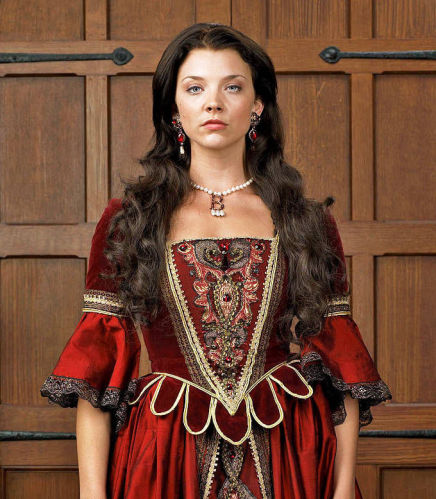
2. Anne Boleyn
With the extraordinary events of her life unparalleled in British history, Anne Boleyn is undoubtedly the most famous of Henry’s wives. Henry may have endured a seven-year courtship and far-reaching political and religious upheavals in order to marry his second wife, but that didn’t stop him having her executed less than three years later.
Henry was 42 and Anne Boleyn was 32 years old.
Anne was born c.1501 to Sir Thomas Boleyn and Lady Elizabeth Howard, and spent much of her youth in France until her return in 1522.
What does ‘c.’ mean?
It means ‘approximately’ or ‘around that time’, when the exact date isn’t known.
Anne Boleyn was reported to be fluent in French and a talented musician and to dress well in line with French fashions. When Henry VIII met Anne, she had previously been betrothed to Henry Percy, but this engagement had been broken off when it did not gain the support of Henry Percy’s father, the fifth Earl of Northumberland.
The King himself had formerly taken Anne’s sister, Mary, as a mistress. While married to Catherine of Aragon, Henry was ‘enjoying the company’ of other ladies.
Anne refused to become the King’s mistress, forcing him to wait through seven years of courtship. In 1532, Henry made Anne the Marquessate of Pembroke, and the pair married formally in January 1533, after a secret ceremony two months earlier.
After going through so much to secure the marriage, the King’s change of heart was likely due to the fact that, like Catherine, Anne seemed unable to bear him a son. After giving birth to Elizabeth I in September 1533, she went on to suffer several miscarriages.
So Henry began to look elsewhere for yet another woman to bear him a son – and he found this woman in Jane Seymour. Anne was less able to accept Henry’s infidelities than her predecessor, and reportedly became enraged and jealous when confronted with evidence of her husband’s affairs.
A month after Henry began courting Jane Seymour, Henry VIII ordered Anne to be investigated for high treason and she was sent to the Tower of London.
After being tried on charges of adultery, incest (naughtiness with your brother or sister) and treason, Anne was found guilty by a jury which included her once fiancee, Henry Percy. The treason charge meant plots to kill the King.
Five men were found also guilty of adultery, among whom was Anne’s brother, George, hence the charge of incest. All were executed on Tower Hill.
She was beheaded four days later on Tower Green, and in her final speech she did not admit guilt but instead declared her innocence and, perhaps to keep her daughter in Henry’s favour, prayed ‘God save the King, and send him long to reign over you, for a gentler nor a more merciful prince was there never.’
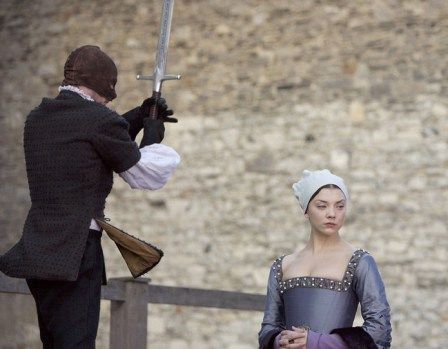
3. Jane Seymour
Henry’s love for – or at least infatuation with – Anne may have sparked the Reformation, but Jane Seymour is commonly thought to have been his favourite wife. This is most likely because Jane gave him what none of his other wives could: a son who lived.
Henry was 45 and Jane Seymour was 28 years old.
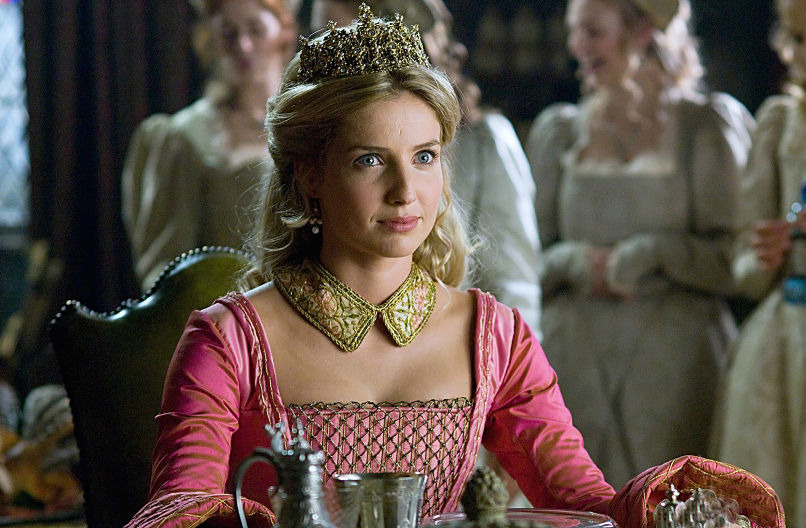
Like Anne Boleyn, Jane had served as a lady-in-waiting to the queen she would replace. They also shared a great-grandmother.
Jane was not as highly educated as either of her predecessors, though her peaceful and gentle personality, which was far different to that of the two previous wives, allowed her to try to make the court more peaceful and stable.
She married the Tudor King in May 1533, just days after Anne had been beheaded.
Her marriage to Henry was overshadowed by the need to give birth to an heir, with some suggesting that this was a factor in the delay of her coronation.
Jane gave birth to a son in October of the following year. This son would go on to become King Edward VI, but she would not live to see him become monarch. After developing post-natal complications, she died less than two weeks after his birth, aged only 29.
Jane is also attributed with reconciling her husband to his first daughter, Mary, during their short marriage. Her connection to her step daughter was such that Mary acted as chief mourner at her funeral.
Jane was the only one of Henry’s wives to be given a queen’s funeral, despite never having had a coronation, and was the wife who Henry chose to be buried with upon his own death in January 1547.
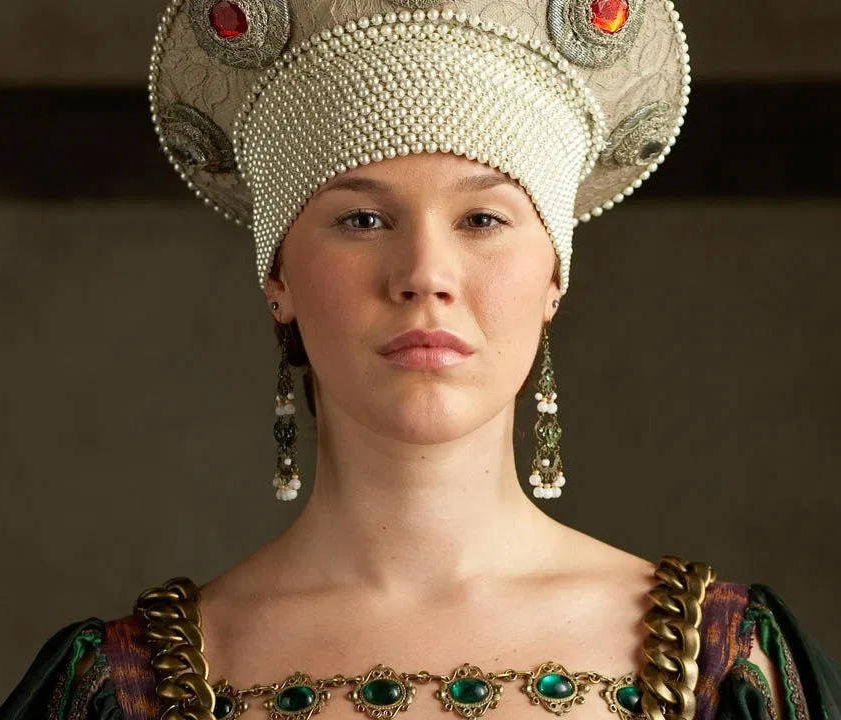
4. Anne of Cleves
Henry’s last three wives are less famous than his first three, a matter not helped by the fact that each shares their name with a predecessor.
Anne was from far away Cleves.
Henry was 49 and Anne of Cleves was 24 years old.
In which modern country was Cleves?
Germany.
So, how did Henry know what she looked like? There were no cameras, of course.
He sent a famous painter (Hans Holbein) to Cleves, to paint a portrait and bring it back to show Henry what Anne looked like.
Henry fell for the picture - which showed Anne as beautiful and young. Unfortunately, the painting and reality did not match and he instantly thought she was unattractive.
So it was hardly surprising given that her marriage with Henry went unconsummated.
Henry married Anne in January 1540, though negotiations for the marriage are believed to have begun shortly after Jane’s death. The daughter of the Duke of Cleves and Count of Mark, Anne was considered a politically expedient match (a good political and financial joining of families) by Henry’s advisers.
But the King proved far less enamoured with his fourth wife than he had with her two predecessors. Which means he really was not attracted to her, physically.
Anne of Cleves was only just older than Henry’s oldest child, Mary, and had no formal education.
After marrying this Anne in January 1540, Henry had their marriage annulled just six months later, saying (again) that it had not been consummated, as well as his Anne’s previous engagement to another man, Francis, Duke of Barr and later Lorraine.
Henry blamed the marriage going unconsummated on Anne’s appearance but this slight didn’t stop the pair later becoming close friends.
Her acceptance of the annulment seemed to win her favour with Henry and she subsequently became an honorary member of his family, known as “the King’s Beloved Sister”.
Her generous settlement included Richmond Palace and also the home of Henry’s former in-laws, the Boleyns, Hever Castle.
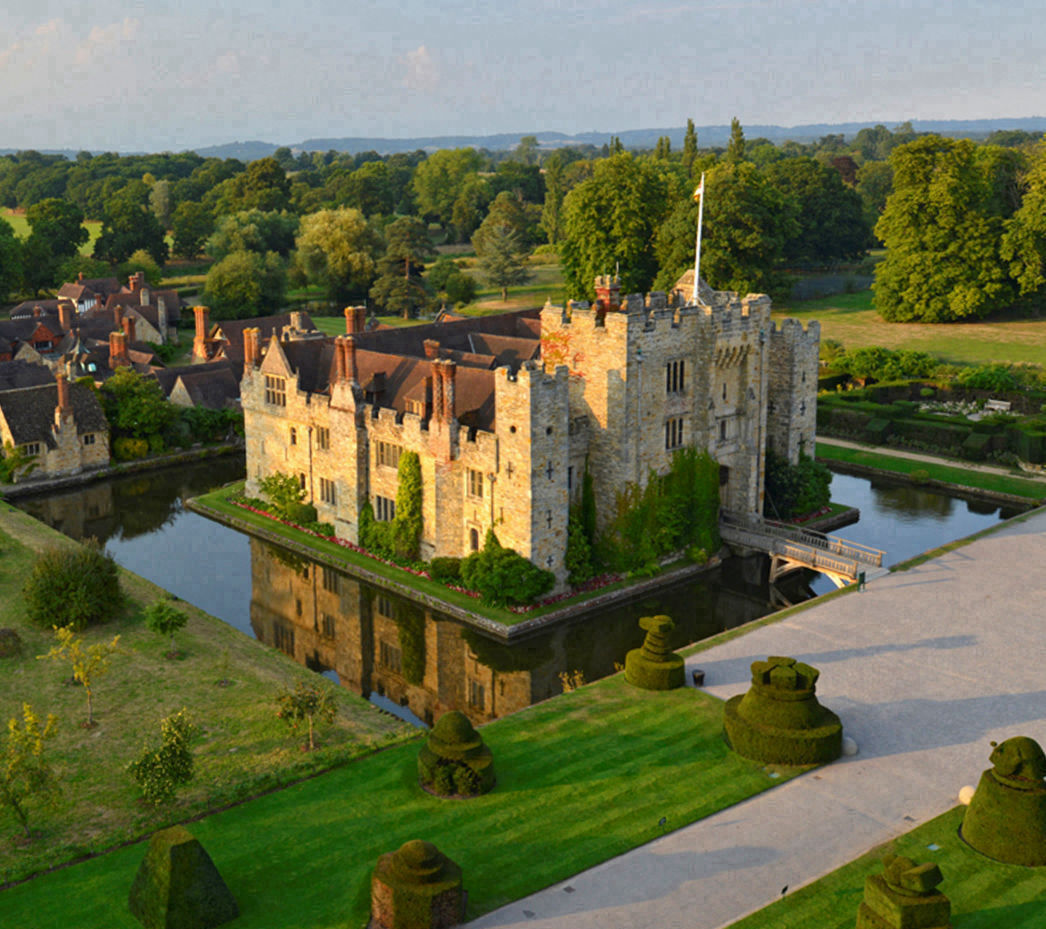
Hever Castle, which is still there and you can visit it, and see where both Anne Boleyn and Anne of Cleves lived, if you go to England.
Like Henry’s third wife, his fourth (Anne of Cleves) had a good relationship with his daughter, Mary.
Anne died in 1557, outliving all of the other five wives and Henry himself. She is the only one of Henry’s queens to be buried in Westminster Abbey.
The political adviser who arranged the marriage did not fare so well, however; Thomas Cromwell was executed on 28 July 1540, the same day that Henry married his next wife.
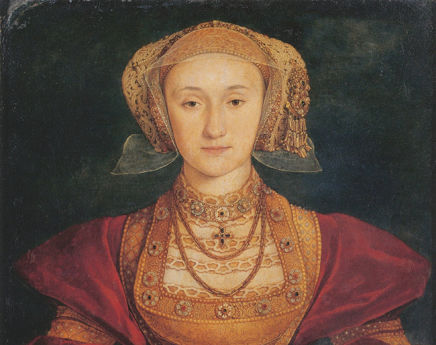
5. Catherine Howard
Henry’s marriage to Catherine Howard came close to matching the drama of his earlier marriages – perhaps unsurprising given that this teenage bride was a cousin of Anne Boleyn.
Catherine Howard’s life had been turbulent (unsettled and stormy) even before Henry came on the scene.
Henry was 49 and Catherine Howard was 15 years old.
Catherine even had an affair with the Dowager’s secretary, Francis Dereham.
After the Dowager Duchess found out, Catherine was sent to court to serve as a lady-in-waiting to Anne of Cleves.
What is a ‘lady-in-waiting’?
It’s a personal servant of a Queen.
The King became attracted to Catherine’s youth, looks and vivacity.
What is ‘vivacity’?
It’s liveliness, joyfulness and even playfulness.
The pair were married in 1540.
But ...in the spring of the following year, Catherine is alleged to have begun an affair with a favoured courtier of Henry’s called Thomas Culpeper. Their meetings were reportedly organised by Jane Boleyn, the widow of Anne Boleyn’s executed brother George.
By autumn, rumours about Catherine’s conduct were everywhere and the Archbishop of Canterbury, Thomas Cranmer, came to learn of her alleged affair with Culpeper, as well as her previous relationship with the Dowager Duchess’s secretary, Dereham.
Cranmer - someone who really wanted power - saw this as his chance to reduce the influence of his rival, the Roman Catholic House of Norfolk, and Cranmer launched an investigation into Catherine’s alleged affairs. Catherine was detained and questioned in November 1541.
Rather than admitting to the earlier affair and arrangement with Dereham, which would have allowed for her annulment and banishment, Catherine maintained that the relationship was not consensual.
Charged with high treason, both Culpeper and Dereham were executed in December 1541.
In order to find Catherine guilty of a crime, the Royal Assent by Commission Act 1541 was passed, making it treasonous to fail to disclose premarital sexual relations to the monarch within twenty days of marriage, or to incite a person to engage in adultery as the Queen consort. Henry made a law to suit the situation (again!)
This means that anyone who married a King of England MUST tell him if she had had ‘naughtiness’ with anyone else, or encouraged another Queen to have an affair.
Within months, Catherine had gone the same way as her cousin Anne, executed for high treason.
On her way by barge to the Tower of London she would most likely have passed under the impaled heads of her reported lovers, Culpeper and Dereham, which were on London Bridge.
Jane Boleyn was also executed and both were buried in unmarked graves at the Tower’s parish chapel alongside Catherine’s cousins, and Jane’s sister-in-law and husband, Anne and George Boleyn.
Catherine was probably about nineteen years old.
6. Catherine Parr
Henry’s sixth and final wife – and his third named Catherine – was perhaps his luckiest.
She married Henry in July 1543, just four months after Catherine Howard was beheaded, and went on to outlive him – though only by a year.
Henry was 52 and Catherine Parr was 31 years old.
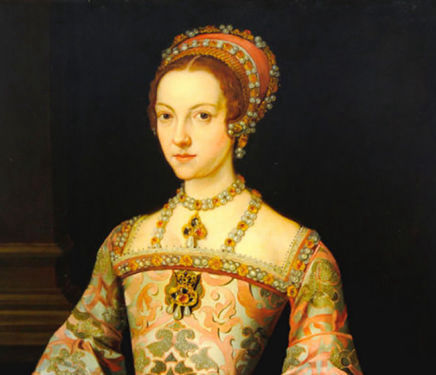
Catherine Parr had been married twice before, being titled Lady Burgh and then Lady Latimer, and married again around six months after Henry died, making her the most married English queen.
This is not Catherine’s only claim to fame: she was also the first queen of both England and Ireland.
The third Catherine had begun a romantic relationship with Jane Seymour’s brother, Thomas, when she caught the eye of Henry. She considered it her duty to marry the King, not Thomas.
In 1546, Catherine, who held strong Protestant (that is, not Roman Catholic) ideas, faced a plot to get rid of her by anti-Protestant officials.
These officials tried to turn Henry against Catherine and even drew up a warrant for her arrest. But Catherine outwitted them and successfully reconciled with her husband, avoiding the same fate as her unlucky predecessors.
What is ‘to be reconciled’?
It means to become friends again after breaking a friendship.
When Henry died in 1547, he left provisions of £7,000 a year for Catherine to support herself, and for Catherine to be treated as Queen Dowager, still in possession of her courtly clothes, jewels and such. And £7,000 a year was a vast amount of money in those days - maybe equal to 100 million baht a year here and now.
Catherine’s last husband was her previous interest and the uncle of the new king (Edward VI, son of Henry and Jane Seymour), Thomas Seymour.
Seymour is reported to have also had interests in the future queen, Lady Elizabeth, who lived with the married couple. This rumour was included in evidence which resulted in Thomas Seymour’s execution in 1549 for treason, after his wife’s death.
For in August 1548, Catherine had given birth to her only child, and died several days later from suspected childbed fever.
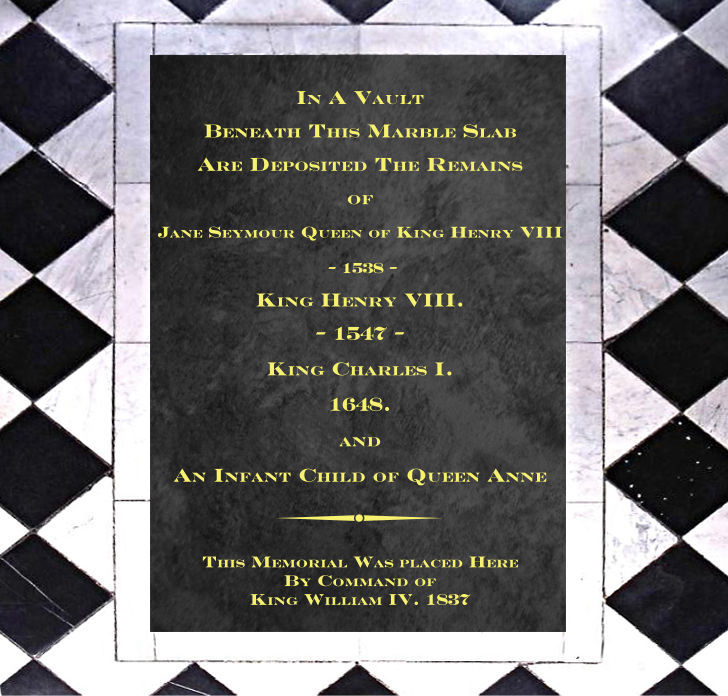
The burial place of King Henry VIII and Jane Seymour
In a vault beneath this marble slab are deposited the remains of
Jane Seymour Queen of King Henry VIII 1537, King Henry VIII 1547,
King Charles I 1648 and an infant child of Queen Anne.
This memorial was placed here by command of King William IV. 1837.